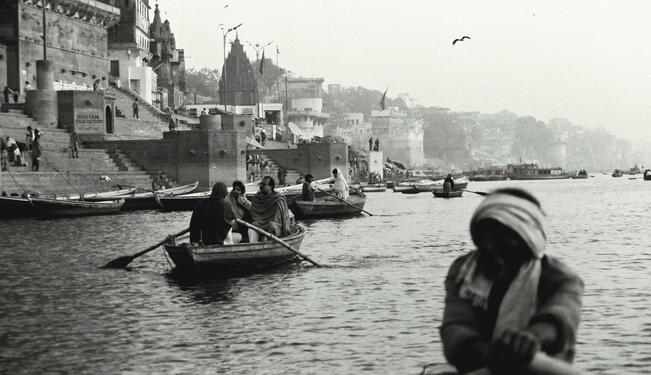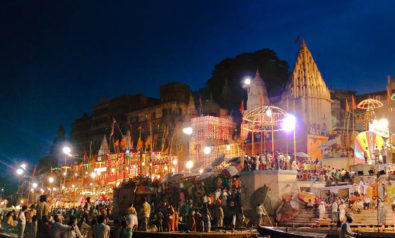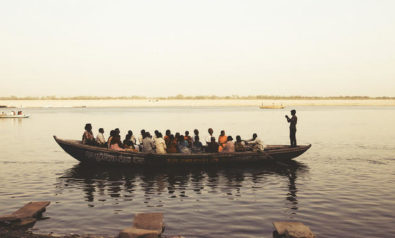A discussion about the Indian government’s failure to encourage public participation in the formation and implementation of the Ganga Action Plan, environmental policies created to curb pollution in the River Ganga.
Meaningful public participation is important for forming successful environmental policies. Public participation, defined by Thomas Dietz and Paul C. Stern (2008) as “processes” that “elected officials, government agencies, or other public- or private-sector organizations” employ “to engage the public in environmental assessment, planning, decision making, monitoring, and evaluation”, has been a missing piece in the Indian government’s fight to clean up the River Ganga, or Ganges as it is known formally, through their Ganga Action Plan (GAP). Without the participation of the public to change perceptions about environmental pollution in their communities or enhance the quality and legitimacy of the GAP’s policies, the government has been unable to clean up India’s holy, polluted river.
A spiritually pure, but physically impure river
For Hindus in India, the Ganga is the most sacred river in the world. As described in Hindu myths, the Ganga has the abilities to cleanse the souls of those who sip, bathe, or scatter their ashes into her waters, ensuring them safe passage into the afterlife. Pilgrims travel from around India to seek the River Ganga’s blessings; daily the holy city of Varanasi in Uttar Pradesh receives sixty thousand devotees who come to visit her. Although the River Ganga may be spiritually pure, it has earned the moniker “one of the most polluted rivers in India” since India’s independence, as billions of liters of “untreated sewage”, containing both human and industrial waste, have been deposited from “each of the 27 cities located along its banks”. The disposal of cremated human bodies into the river, a Hindu funerary ritual, and human urination and defecation have also contributed to the pollution problem, threatening the health of both humans and wildlife.
The Indian government has taken steps over the years to clean up the river. Specifically, in the mid-1980s, under the guidance of the late Prime Minister Rajiv Gandhi: The government adopted the Ganga Action Plan (GAP), which was conceived as way to curb the amount of waste in the Ganga. Since then, however, many including government officials and environmental activists have deemed the GAP a failure. After an audit in 2006, exactly twenty years after its adoption, the media reported that the GAP had met “only 39 per cent of its target of sewage treatment”. Recently, in August 2012, India’s Environment and Forests Minister, Jayanthi Natarajan, declared that the Ganga’s pollution problem had worsened: “The levels of bacterial contamination in terms of faecal coliform are reported to be exceeding the maximum permissible limit at a number of locations”.
While many commentators have correctly pointed to the mismanagement of allocated funds and limited technical expertise of planners and administrators as reasons the GAP has not met its objectives, another important reason is because the Indian government has failed to encourage the participation of the public, namely local Hindu communities who not only interact with the River Ganga but have been the most impacted by their policies.
Why is public participation important and what has been its role in the GAP?
Successful environmental policies necessitate “changes in the behavior[s] [and attitudes] of a multitude of diverse groups of actors, not just corporations and governments” with respect to their perceptions about what constitutes an environmental problem (Dietz & Stern, 2008). Governments must use local leaders, who have a better understanding of belief systems within a certain region, to educate the public about threats to the environment to ensure they “participate in setting the rules, in determining sanctions, and in other issues related to the management of the resource” (Das & Tamminga, 2012).
For the GAP, government officials did not employ local leaders in communicating the pollution problem to Hindus who are connected to the River Ganga. Because these government officials were not familiar with local belief systems, they used the word ‘pollution’ when describing the river’s condition. Though they assumed the word would translate as “fecal coliform count, biological oxygen demand, and dissolved oxygen”, many Hindus believed they were instead calling the River Ganga spiritually impure: “data revealed that those who depend on the Ganges for spiritual sustenance speak of ‘pollution’ in terms of sacred impurity associated with declining social and religious values” (2012). Both confused and offended, many Hindus chose not to become involved in the cleanup.
Furthermore, governments must also create channels, including community forums, through which groups are able to inform environmental policies in order to ensure their success; Dietz and Stern (2008) maintain greater inclusion increases their quality as the process helps “identify the values, interests, and concerns of all who are interested in or might be affected by the environmental process or decision”, needed for selecting an appropriate course of action. Greater inclusion is also said to enhance legitimacy as it creates policies “seen by the interested and affected parties as fair and competent and that follows the governing laws and regulations” (2008). Both measures typically encourage groups to maintain interest in the implementation of environmental policies.
The government did not create necessary channels through which to include Hindus in the formation of the GAP’s policies, a move which eventually doomed some of the provisions. In one noted occasion, the government created a police force in Varanasi “to monitor pollution along the river”, without collaborating with local communities through committees or group meetings (Das & Tamminga, 2012). According to Priyam Das and Kenneth R. Tamminga (2012), the government’s decision resulted in a divisive and ineffective police force. Worshippers who were visiting the Ganga often complained that police officers were harassing them while they were worshipping. Others claimed that the police force was engaging in “corruption” rather than cleaning up the river: “They would dump dead bodies in the river and pocket the money they were paid by the municipal corporation for cremating unidentified bodies” (2012). As would be expected, these actions resulted in “alienating the local community [even further] instead of getting them involved” (2012).
Moving forward
In the last month especially, the Indian government has come under fire for the failure of many policies associated with the Ganga Action Plan; however, they have taken at least some steps over the past few years to increase public participation in the cleanup effort. For instance, they selected the esteemed Dr. Veer Bhadra Mishra to join the National Ganga River Basin Authority (NGRBA), a group established in 2009 under the Environment Protection Act of 1986 to oversee pollution mitigation efforts in the River Ganga. Dr. Mishra is one of India’s biggest advocates for public participation. Using his backgrounds as a Hindu priest and civil engineer, he tries to educate the public and curb pollution in the River Ganga through the Sankat Mochan Foundation (SMF), a non-profit he founded (Emoto, 2004). Though the River Ganga remains polluted, Dr. Mishra’s appointment demonstrates that the government is at least aware that public participation is necessary to ensure the success of environmental policies.
Support Fair Observer
We rely on your support for our independence, diversity and quality.
For more than 10 years, Fair Observer has been free, fair and independent. No billionaire owns us, no advertisers control us. We are a reader-supported nonprofit. Unlike many other publications, we keep our content free for readers regardless of where they live or whether they can afford to pay. We have no paywalls and no ads.
In the post-truth era of fake news, echo chambers and filter bubbles, we publish a plurality of perspectives from around the world. Anyone can publish with us, but everyone goes through a rigorous editorial process. So, you get fact-checked, well-reasoned content instead of noise.
We publish 3,000+ voices from 90+ countries. We also conduct education and training programs
on subjects ranging from digital media and journalism to writing and critical thinking. This
doesn’t come cheap. Servers, editors, trainers and web developers cost
money.
Please consider supporting us on a regular basis as a recurring donor or a
sustaining member.
Will you support FO’s journalism?
We rely on your support for our independence, diversity and quality.







Comment